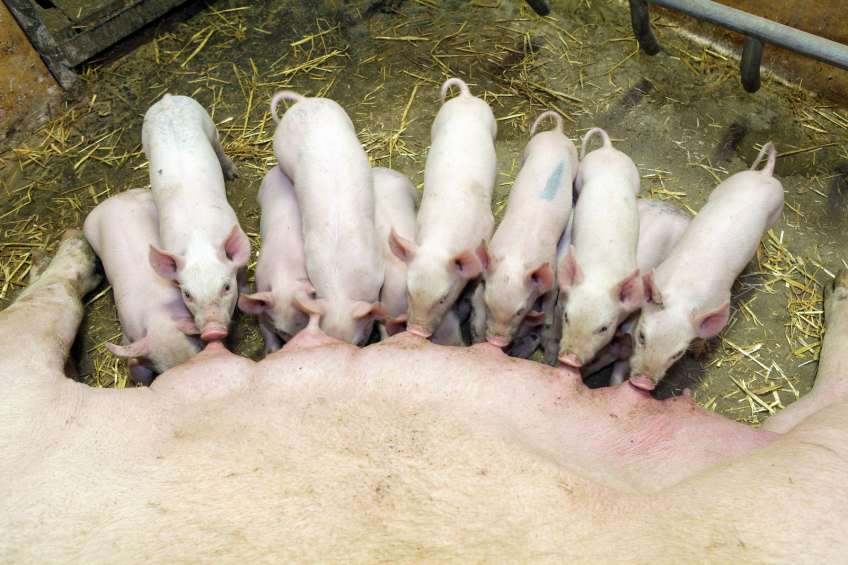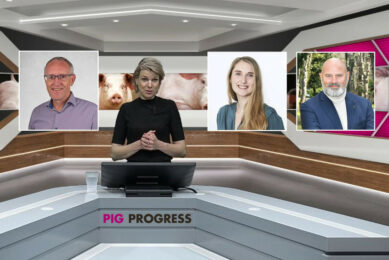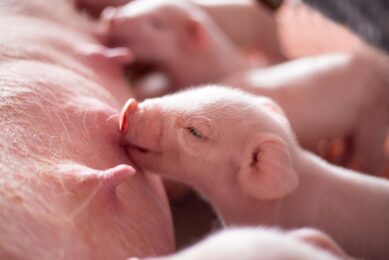The cost of lost opportunities in sow production

What affects herd performance most? Having answers to a question like this can help manage a sow herd a lot more efficiently. The ‘On-farm Pig Solutions Program’ has been designed exactly to give this helping hand to breeders.
*By Steve Bourne and Jules A. Taylor-Pickard, Alltech; William H. Close, Close Consultancy; and Neville Beynon, N&R Services
Efficient sow reproduction is fundamental to achieving a successful, sustainable and economically viable swine industry. The key criteria used to assess the efficiency of sow performance are the number of piglets weaned per litter, per year or per lifetime. The modern hyperprolific sow has a great potential to produce piglets and 30 piglets weaned per year is an achievable target. If performance is less than this, then action needs to be taken to identify those nutritional, management, husbandry, environmental and healthcare factors that are limiting performance and which increase the cost of production.
The question arises: ‘Which is the most important aspect of performance to improve and how can it be achieved?’ One procedure is to calculate the cost of the loss of opportunity associated with the various key indicators of sow performance when compared with target values, and to identify where the greatest economic losses occur. Action can then be taken and a strategy developed to reduce these losses. This is the objective of the ‘On-farm Pig Solutions Program’ developed by Alltech.
The aim of the programme is to identify those key performance indicators that are below target and to calculate the cost associated with those differences in performance. Action can then be recommended to improve performance. The programme is spread sheet based which allows inputs to be changed and hence flexibility in the outcomes of the programme. So how does the programme work?
Comparison
Table 1 provides information on the actual performance of sows relative to the target values for modern animals of good reproductive potential weaning 30 piglets per sow per year. The differences in performance can be highlighted and discussed. Key economic facts are also provided such as the cost of feed, the value of gilt and culled sow as well as the value of a piglet at weaning. This allows the differences in the key production indices to be economically evaluated.
In the current example there is a difference of 3.9 piglets weaned per year between the actual and target levels of performance and this represents a financial loss of €136,500. This results from a difference in the number of piglets weaned per litter and the number of litters produced per sow per year. Interestingly, it is the difference in farrowing rate (€94,500), pre-weaning mortality (€23,800) and the number of empty or nonproductive days (€27,200: equivalent to €2.35/day) that have the biggest impact on the potential economic losses. That associated with the replacement rate is small.
Obviously, as the number of piglets weaned per sow per year varies, as well as the financial value of the piglets, then this will have an effect on the net margin per sow per year as indicated in Figure 1. The higher the value of the piglet at weaning, the greater the net margin per sow and the fewer the number of piglets needed to break even.
Break-even level
One has to ask whether the current level of performance is sustainable and what levels of performance are needed on farm to financially break-even? Under the present system of production and current costs, the number of piglets required per sow per year to break-even is 27.6, compared with the current level of performance of 26.1, that is a difference of 1.5 piglets. Similarly, at the current level of performance, the price of the piglet at weaning would need to increase from €35.0 to €37.05, that is an increase of €2.05 per pig, in order to break-even. Based on these predictions suggestions can then be made in an attempt to improve production as indicated.
The current calculations assume that the feed costs are 45% of total costs, but this figure can be adjusted to take account of the different systems of production and costs of feeding as illustrated in Figure 2. Thus, as both the value of the piglet at weaning and feed costs as a proportion of total costs change, then the number of piglets weaned per year needed to break-even varies between 21.8 (€40 at 50%) and 36.2 (€30 at 40%). This illustrates the flexibility of the programme.
Currently, feed prices are high and this has a major impact on the break-even costs of production. As feed costs change so then will the number of piglets required to break-even as indicated in Figure 3. It may be calculated that each €30 change in the cost of feed is associated with a 2.6-3.6 change in the number of piglets required to cover the beak-even costs as the piglet value decreases from €40 to €30, respectively.
Producer and trial reports
Once the major areas of concern have been established, reports can be prepared for producers highlighting the break-even costing and sensitivity analysis relating to the net margin per sow per year. Suggestions and actions to improve performance can then be suggested and economically evaluated, such as those presented in Table 2.
The changes in performance can be reviewed regularly with the aim to improve the performance and economic efficiency on farm. An additional objective of the programme is to enable an economic evaluation of the animals’ responses to different treatments. This can be illustrated from the results of studies where Bio-Mos was included in the diet of sows. The data relate to a meta-analysis of 12 studies including 3,000 sows. Table 2 shows that the net margin per sow per year increases by some €42/ year when Bio-Mos/Actigen is included in the diet, with a ROI value of ~5:1.
Conclusions
The programme has been designed to demonstrate the impact of performance on profitability and to establish where performance on farm needs to be improved and then to financially evaluate the difference in performance compared to achievable targets. Strategies can then be adopted to overcome these deficiencies in production. The programme considers not only the breeding sow, but also the weaner and grow-finish pig and can also be used on a whole-herd enterprise.
The overall objective of the programme is to ensure that the modern pig genotypes achieve their genetic performance potential in an efficient, sustainable and financially viable manner.






